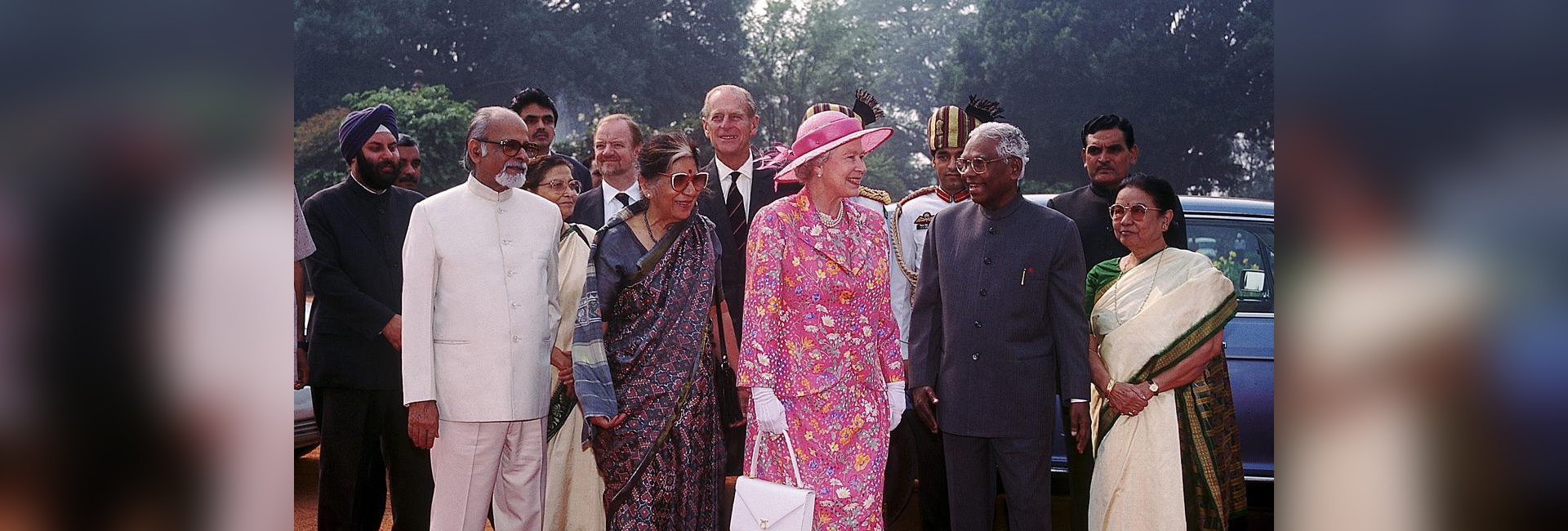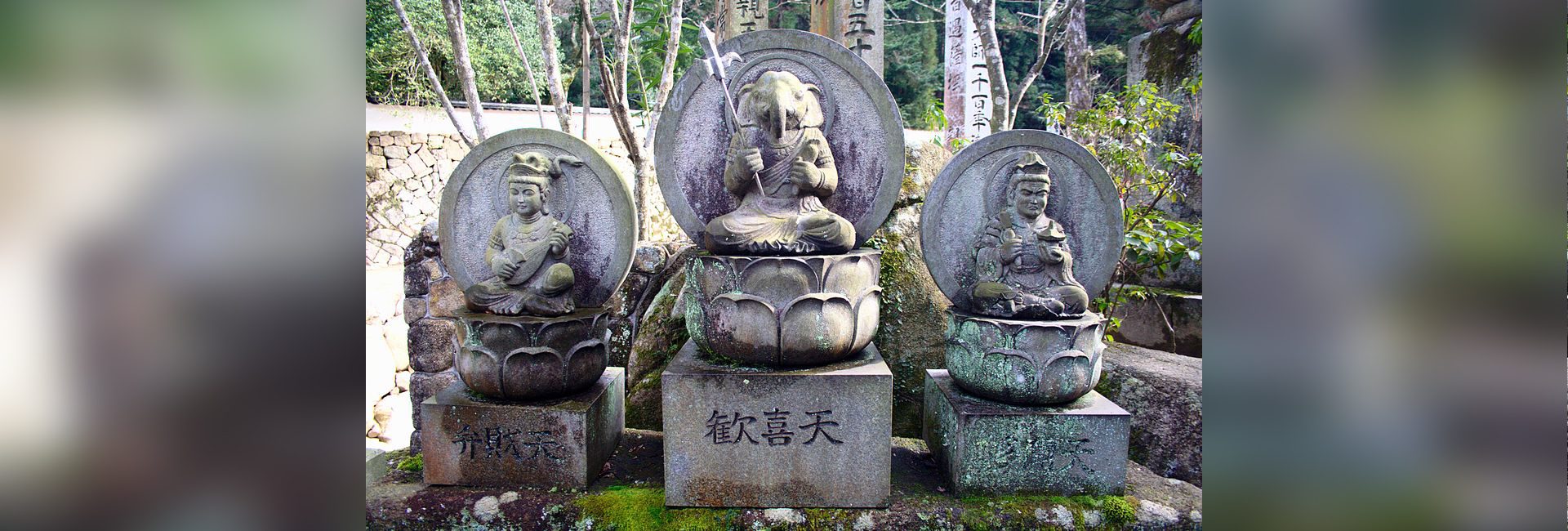(September 10, 2022) Queen Elizabeth II is the world’s most iconic monarch and with her passing on September 8, 2022, she will always be remembered for being the picture of grace, dignity and poise in good times and bad, through gain and loss alike. In 1947, when she married her longtime love, she received two gifts. One, was the now famous Cartier tiara and a diamond necklace of her choice. The other, a handwoven handkerchief from Mahatma Gandhi, which she always cherished, even showing them to Prime Minister Narendra Modi when they met.
Prime Minister Modi recalled this gift in his condolence tweet, mentioning his meetings with the Queen during his UK visits in 2015 and 2018, saying, he will “never forget her warmth and kindness.” Global Indian takes a look at her three state visits to India, in 1961, 1983 and 1997. Each time, she was moved by the “warmth and hospitality” she received every time. In one of her addresses, she said, “The warmth and hospitality of the Indian people, and the richness and diversity of India itself have been an inspiration to all of us.”

Queen Elizabeth II with PM Narendra Modi. Photo: Twitter
1961: Tiger hunts, elephant rides and Republic Day at Rajpath
The royal couple’s first visit to India was in 1961, on the invitation of then President of India, Dr Rajendra Prasad. People lined the streets, climbed to rooftops and sat in balconies, hoping for a glimpse of Her Majesty. Fifty years had passed since the last British royal visit – her grandfather, King George V, who came to India in 1911, had been the last monarch to do so.
Queen Elizabeth and the Duke of Edinburgh were the guests of honour at the Republic Day celebrations at Rajpath, in Delhi. Thousands gathered at Ramlila Grounds as the Queen, dressed in a fur coat and hat, made her address. In that Delhi leg of the tour, she visited Mahatma Gandhi’s memorial at Rajghat, offering a ceremonial wreath and even leaving a note in the visitor’s book, a rare gesture for the Monarch, who is accustomed to simply signing her name. She also inaugurated the All-India Institute of Medical Sciences building, along with then president Dr Rajendra Prasad.

The Queen with former Prime Minister Jawaharlal Nehru at the Republic Day Parade, 1963
The royal couple toured India’s historical sites, coming to Agra, where they saw the Taj Mahal and travelling to also came to Mumbai, Bengaluru, Chennai and Kolkata. The erstwhile Maharaja of Benares extended his hospitality to the royal couple, who rode through the streets atop a bejewelled elephant. In Udaipur, they were greeted by Maharajana Bhagwat Singh, who arrived to meet his guests with a grand entourage of over 50 noblemen. The Prince of Jaipur organised a tiger hunt. The souvenirs from the trip included an artistic model of Qutub Minar for Her Majesty and a silver candelabra for the Duke of Edinburgh.

Atop an elephant in Benares

After the controversial tiger hunt in Jaipur
1983: Meeting with Mother Teresa
That year, the Queen’s visit was in time for the Commonwealth Heads of Government Meeting, at the invitation of President Giani Zail Singh. The couple stayed at the refurbished wing of the Rashtrapati Bhavan. It also marked her now famous meeting with Mother Teresa, whom she presented with an honorary Order of the Merit.

1997: The controversy in Amritsar, MGR City, Kamal Haasan and MGR Film City
The Queen’s final state visit to India was one of controversy. In a rare departure from her trademark diplomacy, Queen Elizabeth II, in her banquet address, made a reference to one of the “difficult episodes of colonial history:” the 1919 Jallianwala Bagh Massacre. She and her husband even visited the site in Amritsar to place a wreath, a bold move, as protests had erupted across the country and there were widespread demands for an apology.
It wasn’t all about macabre memories, though. In October 1997, Tamil actor Kamal Hassan was in the midst of one of his most ambitious projects, Marudhanayagam. The Queen, who was in the country then, attended the launch of the film as the chief guest. The event took place in Chennai, at MGR Film City. She also visited the sets and watched a short battle scene, which had alone cost ₹1.5 crore. The Queen spent time with Kamal Haasan and his now ex-wife Saarika, as well as with long-time Tamil Nadu Chief Minister M Karunanidhi. Incidentally, the film was shelved when a major funder backed out.

Her Majesty with Kamal Haasan during the shooting of Marudhanayagam
The Queen has hosted three Indian Presidents – Dr Radhakrishnan in 1963, N Venkataraman in 1990 and Pratibha Patil in 2009.
Read a similar story of Kanaksi Khimji, the only Hindu Sheikh in the world.



